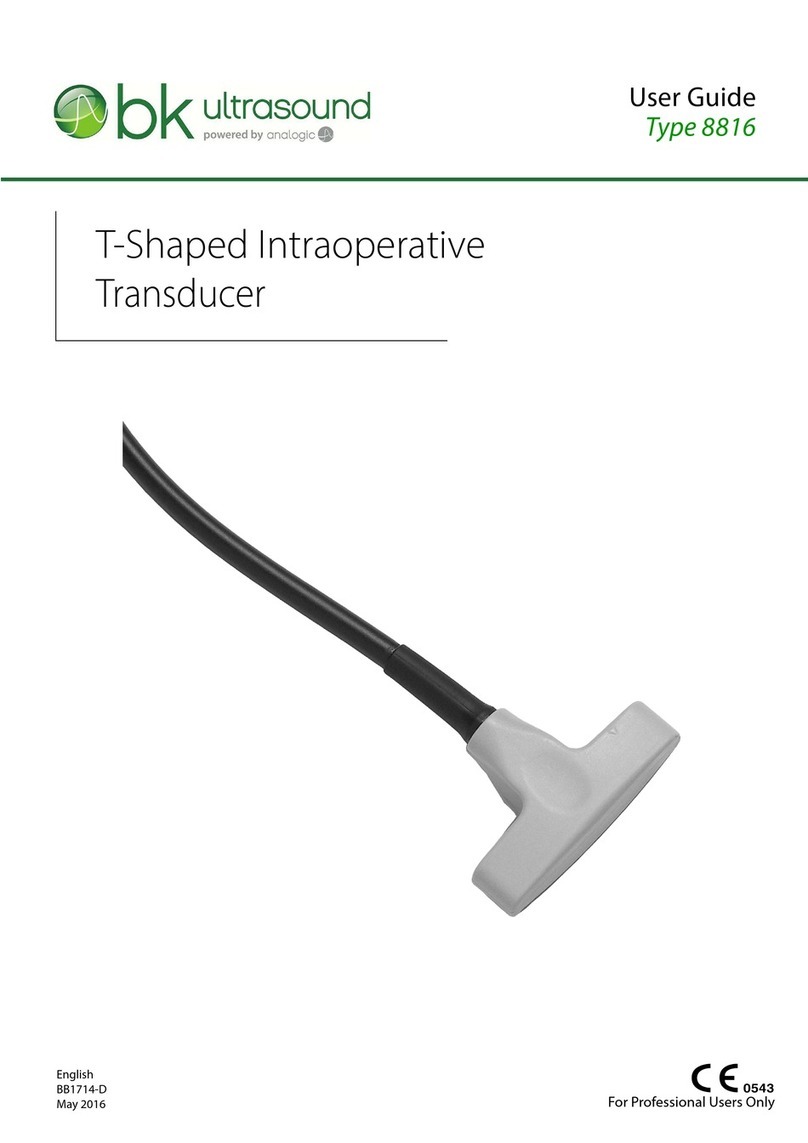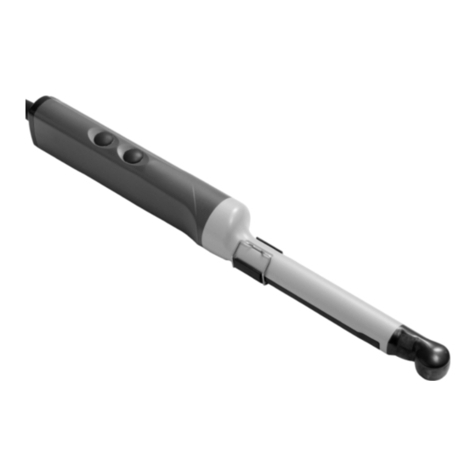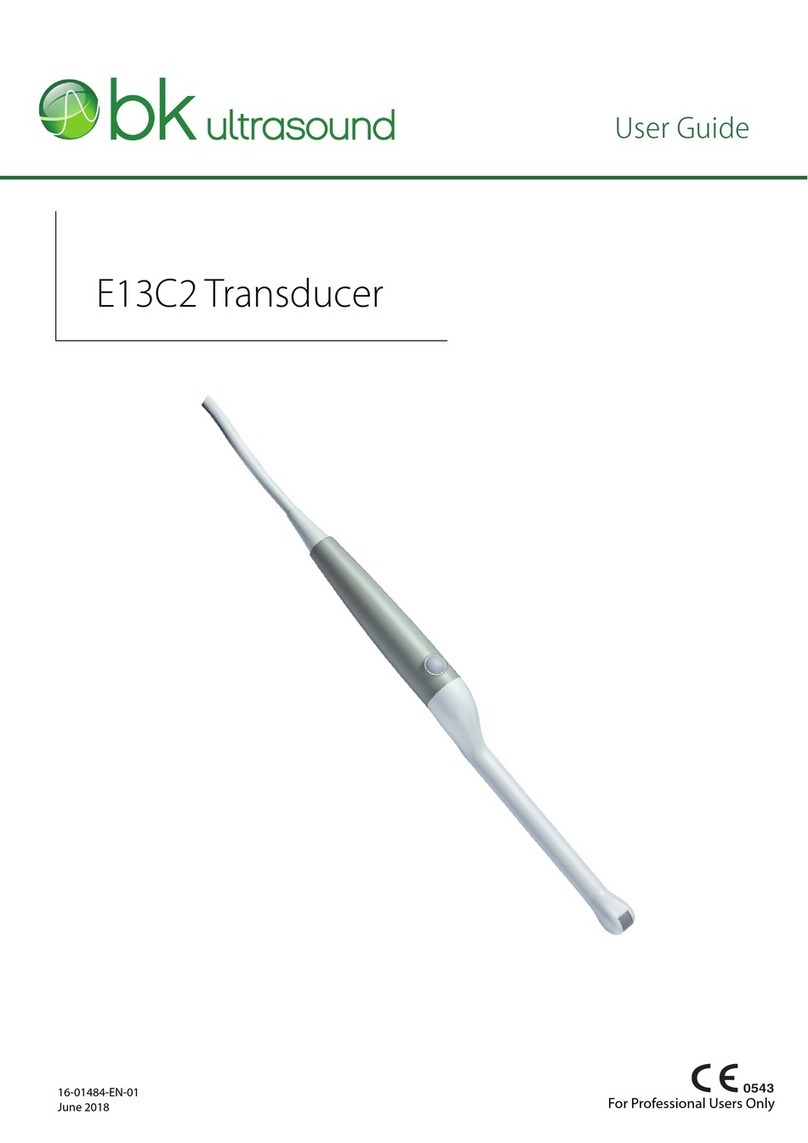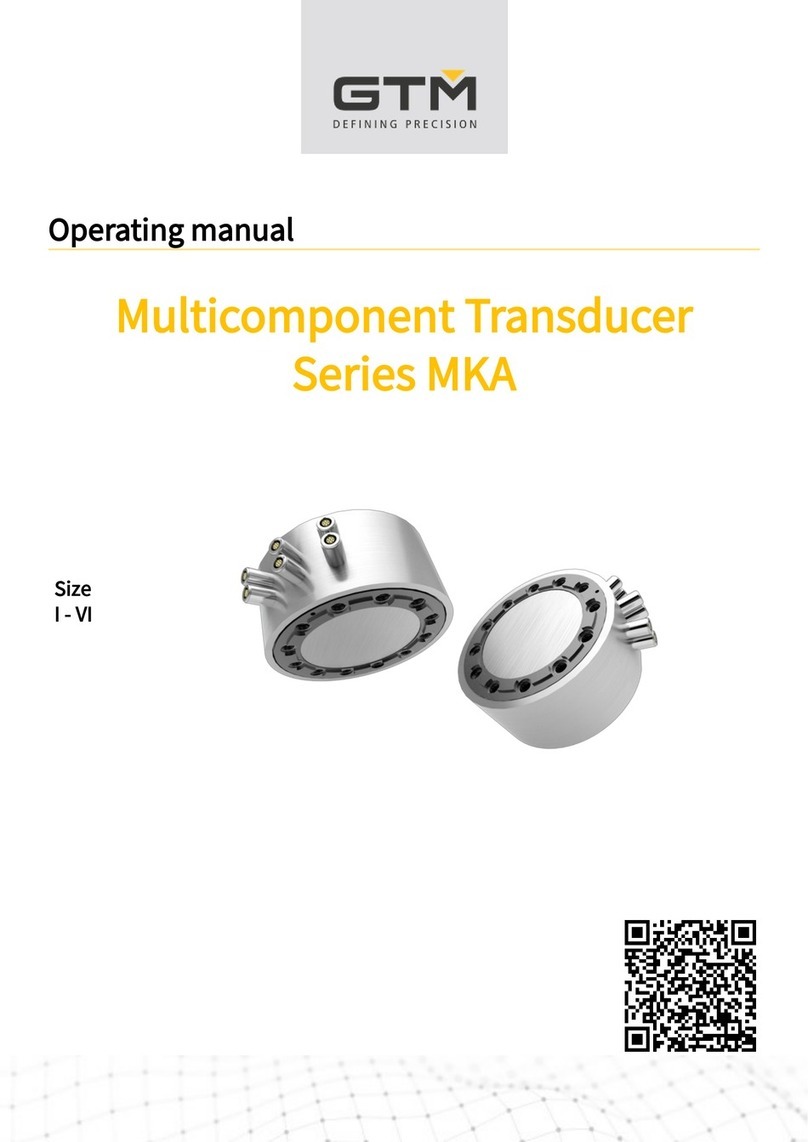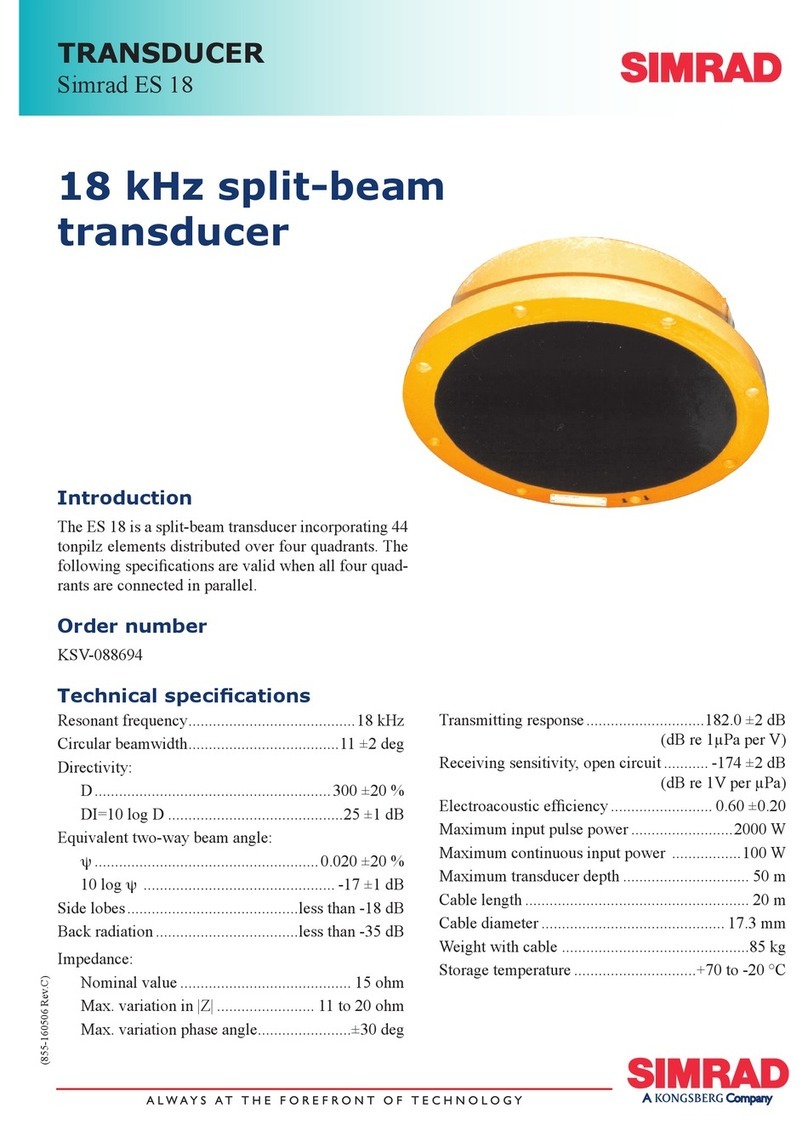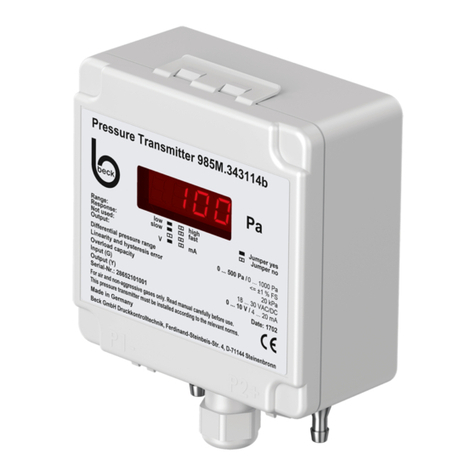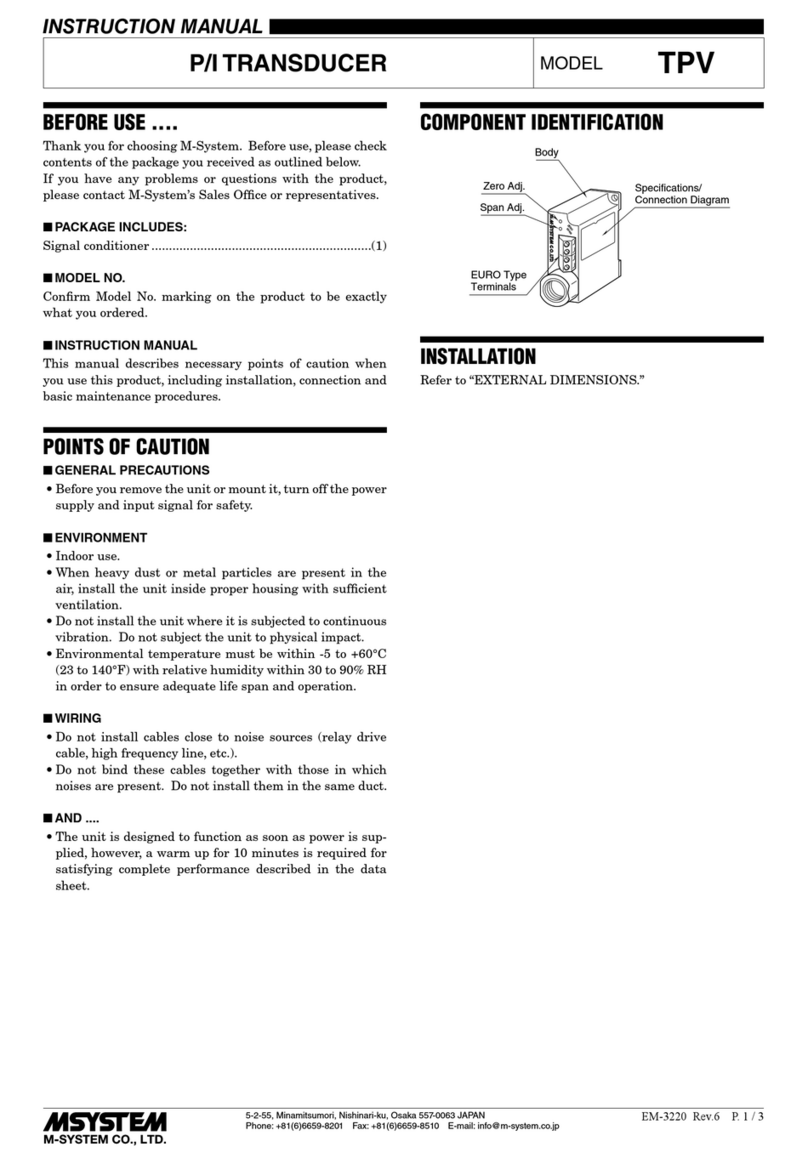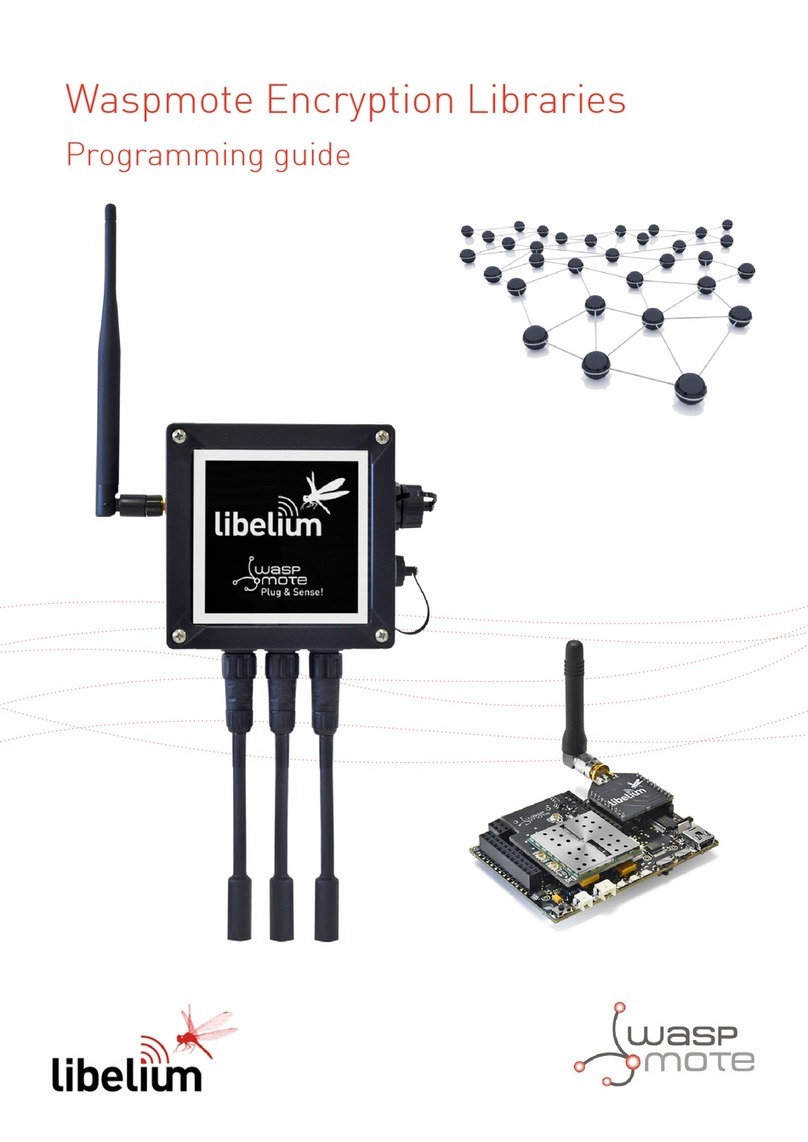bk ultrasound 8830 User manual

For Professional Users Only
Convex Array Transducer
English
BB1837-C
May 2016
User Guide
Type 8830

WORLD HEADQUARTERS
Mileparken 34
DK-2730 Herlev
Denmark
Tel.:+45 44528100 / Fax:+45 44528199
www.bkultrasound.com
Email: [email protected]
If you have comments about the user documentation, please write to us at the email address
above. We would like to hear from you.
BK Medical Customer Satisfaction
Input from our customers helps us improve our products and services. As part of our customer
satisfaction program, we contact a sample of our customers a few months after they receive their
orders. If you receive an email message from us asking for your feedback, we hope you will be
willing to answer some questions about your experience buying and using our products. Your
opinions are important to us. You are of course always welcome to contact us via your BK
Medical representative or by contacting us directly.
© 2016 BK Medical
Information in this document may be subject to change without notice.

3
Contents
Introduction . . . . . . . . . . . . . . . . . . . . . . . . . . . . . . . . . . . . . . . . . . . . . . . . . . . . . . 5
Scanning Plane . . . . . . . . . . . . . . . . . . . . . . . . . . . . . . . . . . . . . . . . . . . . . . . . 5
General Information . . . . . . . . . . . . . . . . . . . . . . . . . . . . . . . . . . . . . . . . . . . . . . . 5
Service and Repair . . . . . . . . . . . . . . . . . . . . . . . . . . . . . . . . . . . . . . . . . . . . . 6
Caring for the Transducer. . . . . . . . . . . . . . . . . . . . . . . . . . . . . . . . . . . . . . . . 6
Cleaning and Disinfection . . . . . . . . . . . . . . . . . . . . . . . . . . . . . . . . . . . . . . . . . . . 6
Starting Scanning. . . . . . . . . . . . . . . . . . . . . . . . . . . . . . . . . . . . . . . . . . . . . . . . . . 7
Connecting the Transducer. . . . . . . . . . . . . . . . . . . . . . . . . . . . . . . . . . . . . . . 7
Changing Frequency. . . . . . . . . . . . . . . . . . . . . . . . . . . . . . . . . . . . . . . . . . . . 7
Using a Transducer Cover . . . . . . . . . . . . . . . . . . . . . . . . . . . . . . . . . . . . . . . 7
Using the Transducer Control Button. . . . . . . . . . . . . . . . . . . . . . . . . . . . . . . 8
Changing Orientation . . . . . . . . . . . . . . . . . . . . . . . . . . . . . . . . . . . . . . . . . . . 8
Puncture Facilities . . . . . . . . . . . . . . . . . . . . . . . . . . . . . . . . . . . . . . . . . . . . . . . . . 8
UA1250 . . . . . . . . . . . . . . . . . . . . . . . . . . . . . . . . . . . . . . . . . . . . . . . . . . . . . 8
UA1341 . . . . . . . . . . . . . . . . . . . . . . . . . . . . . . . . . . . . . . . . . . . . . . . . . . . . . 9
Performing Puncture and Biopsy. . . . . . . . . . . . . . . . . . . . . . . . . . . . . . . . . . . . . 11
Transcutaneous Biopsy. . . . . . . . . . . . . . . . . . . . . . . . . . . . . . . . . . . . . . . . . 11
RF Ablation . . . . . . . . . . . . . . . . . . . . . . . . . . . . . . . . . . . . . . . . . . . . . . . . . 12
Cleaning after Puncture and Biopsy . . . . . . . . . . . . . . . . . . . . . . . . . . . . . . . 13
Disposal . . . . . . . . . . . . . . . . . . . . . . . . . . . . . . . . . . . . . . . . . . . . . . . . . . . . . . . . 13

4

8830 User Guide
(BB1837-C)
5
Introduction
This is the user guide for Convex Array Transducer Type 8830, and must be used
together with
Care, Cleaning & Safety
which contains important safety information.
8830 is an abdominal transducer suitable for obstetric examinations, bladder and
kidney studies.
Figure 1. Convex Array Transducer Type 8830.
Scanning Plane
Figure 2. Scanning plane for Convex Array Transducer Type 8830.
General Information
Product specifications for this transducer can be found in the Product Data sheet that
accompanies this user guide.
Acoustic output data and data about EMC (electromagnetic compatibility) for this
transducer are in Technical Data (BZ2100) that accompanies this user guide. A full
explanation of acoustic output data is given in your scanner user guide.

6
May 2016
8830 User Guide
(BB1837-C)
Service and Repair
Caring for the Transducer
The transducer may be damaged during use or processing, so it must be checked
before use for cracks or irregularities in the surface. It should also be checked
thoroughly once a month following the procedure in
Care, Cleaning & Safety
.
Cleaning and Disinfection
To ensure the best results when using BK Medical equipment, it is important to
maintain a strict cleaning routine.
Full details of cleaning and disinfection procedures can be found in
Care, Cleaning
& Safety
that accompanies this user guide. A list of disinfectants and disinfection
methods that the transducer can withstand are listed in the Product Data sheet.
Sterile cover is available. See the Product Data sheet for more details.
WARNING
If at any time the scanner malfunctions, or the image is severely distorted or degraded, or
you suspect in any way that the scanner is not functioning correctly:
•
Remove all transducers from contact with the patient.
•
Turn off the scanner. Unplug the scanner from the wall and make sure it cannot be
used until it has been checked.
•
Do not remove the scanner cover.
•
Contact your BK Medical representative or hospital technician.
WARNING
Always keep the exposure level (the acoustic output level and the exposure time) as low
as possible.
WARNING
Service and repair of BK Medical electromedical equipment must be carried out only by
the manufacturer or its authorized representatives. BK Medical reserves the right to
disclaim all responsibility, including but not limited to responsibility for the operating
safety, reliability and performance of equipment serviced or repaired by other parties.
After service or repairs have been carried out, a qualified electrical engineer or hospital
technician should verify the safety of all equipment.
WARNING
Users of this equipment have an obligation and responsibility to provide the highest
degree of infection control possible to patients, co-workers and themselves. To avoid
cross- contamination, follow all infection control policies for personnel and equipment
established for your office, department or hospital.

8830 User Guide
(BB1837-C)
7
Starting Scanning
All equipment must be cleaned and disinfected before use.
Connecting the Transducer
The transducer is connected to the scanner using the array Transducer Socket on the
scanner. To connect, the transducer plug’s locking lever should first be in a horizontal
position. Align the plug to the scanner socket and insert securely. Turn the locking
lever clockwise to lock in place.
When connected, the transducer complies with Type B requirements of EN60601-1
(IEC 60601-1).
Changing Frequency
The Multi-Frequency Imaging (MFI) facility enables you to select the scanning
frequency. See the applicable scanner user guide for instructions. The selected
frequency is displayed at the top of the screen.
Using a Transducer Cover
The transducer should be enclosed in a transducer cover or a standard condom. See
the Product Data sheet for a list of available transducer covers.
Apply gel to the tip of the transducer. This improves the screen images by preventing
image artifacts caused by air bubbles.
Pull the transducer cover over the transducer.
Gel also creates a good acoustic contact between the skin and the transducer;
therefore, apply a small amount to the outside of the cover prior to scanning. Re-
apply the gel frequently to ensure good screen images.
WARNING
Keep all plugs and sockets absolutely dry at all times.
WARNING
Because of reports of severe allergic reactions to medical devices containing latex (natural
rubber), FDA is advising health-care professionals to identify their latex-sensitive patients
and be prepared to treat allergic reactions promptly.
WARNING
Use only water-soluble agents or gels. Petroleum or mineral oil-based materials may harm
the cover material.

8
May 2016
8830 User Guide
(BB1837-C)
Using the Transducer Control Button
The transducer has a control button that you can press to
Start
or
Stop
scanning
(freeze frame). Press the button for more than one second to make a copy of the
image.
Each time the button is pressed, a “beep” is emitted.
The button function can be customized. See the the scanner user guide for more
details.
Changing Orientation
To change the orientation of the image on the monitor, refer to the applicable scanner
user guide for instructions.
Puncture Facilities
Puncture and biopsy are possible with 8830. The puncture attachments are illustrated
in the following pages with a brief description of their uses and operating
instructions.
UA1250
The puncture attachment (see Fig. 3) comprises an attachment bracket, an attachment
lock screw (item A in Fig. 3), a needle guide, a needle-guide lock screw (item B in
Fig. 3) and a variable diameter holder for fine needles (0.6mm or 24 gauge) and large
bore needles (2.4mm or 13 gauge). The guide channel is angled at 18
to the
transducer’s image axis.
Figure 3. Puncture attachment UA1250.
WARNING
It is essential for the patient’s safety that only the correct puncture attachment is used with
8830. Never use unauthorized combinations of transducers and puncture attachments or
other manufacturers’ puncture attachments.
B
A

8830 User Guide
(BB1837-C)
9
To mount biopsy attachment UA1250 ready for use:
Note:
When mounted the attachment lock screw (item A in Fig. 3) should be on the
side of the transducer handle opposite to the transducer’s control button.
1
Mount the attachment bracket on the transducer. Fit the indentations in the sides
of the bracket over the raised metal knobs on either side of the transducer handle.
2
Fix the attachment bracket in position by tightening the attachment lock screw
(item A in Fig. 3). Tighten the screw up to its “locking point”, after which it will
not be possible to tighten the screw anymore.
3
The biopsy attachment should now be fixed solidly to the transducer’s handle.
4
Using the needle guide locking screw (item B in Fig. 3), adjust the needle guide
according to the size of needle to be used.
The distance from the guide channel entrance of the puncture attachment to the first
dot on the scan image puncture line is 56 mm. The distance between the dots is
10mm (see Fig. 9).
All parts of the puncture attachment can be autoclaved or disinfected by immersion
in a suitable solution. See
Care, Cleaning and Safety
that accompanies this user
guide.
Figure 4. Puncture attachment UA1250 mounted on 8830.
UA1341
The puncture attachment kit comprises a reusable bracket (UA1341) for use with
sterile, single-use needle guides (UA0013). Be careful not to discard the plastic
bracket together with the single-use needle guides. The bracket can be disinfected by
immersion in a suitable solution.
To mount UA1341 ready for use:
1
Attach the bracket (UA1341) to the transducer
2
Pull a transducer cover over the transducer and bracket
3
Attach insert onto needle guide (UA0013)
WARNING
Sterile needle guides are disposable products intended for single use only.

10
May 2016
8830 User Guide
(BB1837-C)
4
Lock the needle guide to the bracket
5
Activate the needle guide quick-release.
Figure 5. UA1341 and needle guide UA0013.
Please consult the Reference Guide that accompanies the single-use needle guides
for more detailed instructions on how to assemble the puncture attachment and
needle guides.
Figure 6. Puncture is possible at an insertion angle 18º (left) or a wider insertion angle 36.5º
(right). Here shown without transducer cover.
Figure 7. Bracket mounted incorrectly.
Bracket Needle guide
UA1341 with UA0013
Insert

8830 User Guide
(BB1837-C)
11
Figure 8. Type 8830 with single-use needle guide (UA0013) attached.
Performing Puncture and Biopsy
Transcutaneous Biopsy
Cover the transducer with a sterile transducer cover.
If the transducer cover is damaged when you attach the puncture attachment, replace
it with a new cover.
See the Product Data sheet for a list of available transducer covers.
Press the scanner
Puncture
or
Biopsy
control button to superimpose a puncture
line on the scan image.
If more than one puncture line is available, refer to the applicable scanner user guide
for instructions on how to change which one appears.
Move the transducer until the puncture line transects the target. Insert the needle and
monitor it as it moves along the puncture line to the target. The needle tip echo will
be seen as a bright dot on the screen.
WARNING
It is essential for the patient’s safety that only the correct puncture attachments, as
described in this guide, are used. Never use unauthorized combinations of transducers
and puncture attachments or other manufacturers puncture attachments.
Before beginning a puncture or biopsy procedure, always check that the type number of
the transducer and the type number or description of the puncture attachment match
exactly those displayed on the scanner monitor.
WARNING
The puncture line on the scan image is an indication of the expected needle path. The
needle tip echo should be monitored at all times so any deviation from the desired path
can be corrected.

12
May 2016
8830 User Guide
(BB1837-C)
To remove the puncture line from the image, refer to the applicable scanner user
guide for instructions
.
Figure 9. Puncture lines for UA1250 and UA1341 with 8830.
RF Ablation
When performing RF ablation, you must always follow the instructions provided by
the manufacturer of the RF ablation equipment. Be sure to pay attention to all
warnings.
Do not use excessive force when you insert the needle into the needle guide.
Do not tighten adjustable needle guides so much that they can damage the needle.
If possible, carefully release and remove the needle guide from the transducer after
you insert the RF needle into the patient and before you energize the needle.
If you use metal needle guides to guide RF ablation, you must make sure that the
insulation on the needle is not damaged when the needle is moved back and forth in
the needle guide.
WARNING
If the needle guide is detached from the transducer during interventional procedures,
cover the transducer with a new transducer cover.
WARNING
When performing a biopsy, always make sure that the needle is fully drawn back inside the
needle guide before moving the probe.
UA1341
UA1250

8830 User Guide
(BB1837-C)
13
Cleaning after Puncture and Biopsy
If biological materials are allowed to dry on the transducer or puncture attachments,
disinfection and sterilization processes may not be effective. Therefore, you must
clean puncture attachments and transducers immediately after use.
Use a suitable brush to make sure that biological material and gel are removed from
all puncture attachments and other channels and grooves. See
Care, Cleaning &
Safety
for cleaning instructions.
Disposal
When the transducer is scrapped at the end of its life, national rules for the relevant
material in each individual land must be followed. Within the EU, when you discard
the transducer, you must send it to appropriate facilities for recovery and recycling.
See the applicable scanner user guide for further details.
WARNING
Carefully examine the RF needle before each insertion, to make sure that the insulation is
intact. Make sure that the needle is not damaged during insertion. If the insulation is
scratched, replace the needle with a new RF needle.
WARNING
For contaminated disposals such as transducer covers or puncture attachments, follow
disposal control policies established for your office, department or hospital.

14
May 2016
8830 User Guide
(BB1837-C)


Table of contents
Other bk ultrasound Transducer manuals
Popular Transducer manuals by other brands
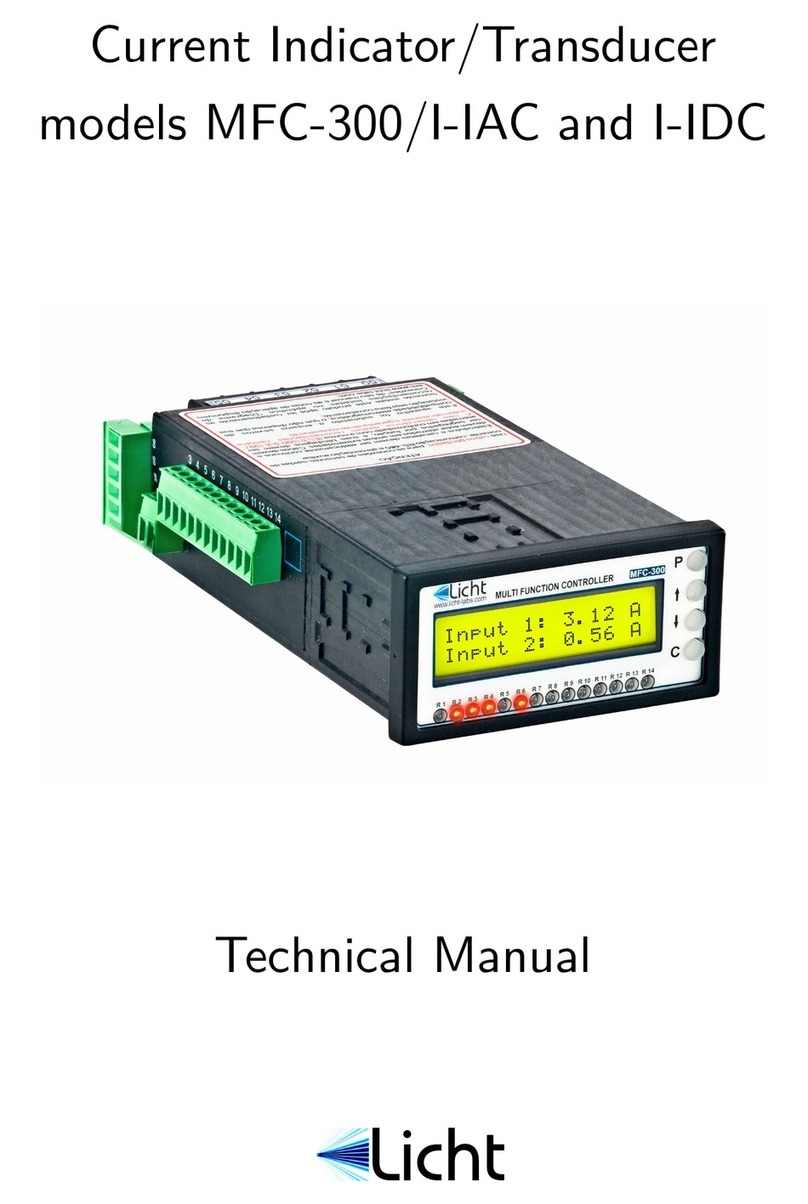
Licht
Licht MFC-300/I-IAC Technical manual

FIAMA
FIAMA MAT2 User manual and maintenance

vacuubrand
vacuubrand VSK 3000 Instructions for use

Matelec
Matelec FPC-12571 quick start guide
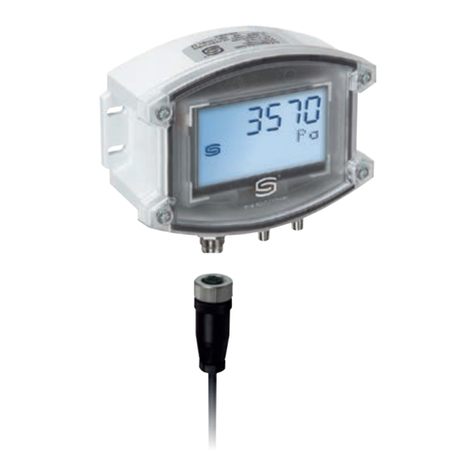
S+S Regeltechnik
S+S Regeltechnik PREMASGARD 711x Series Operating Instructions, Mounting & Installation
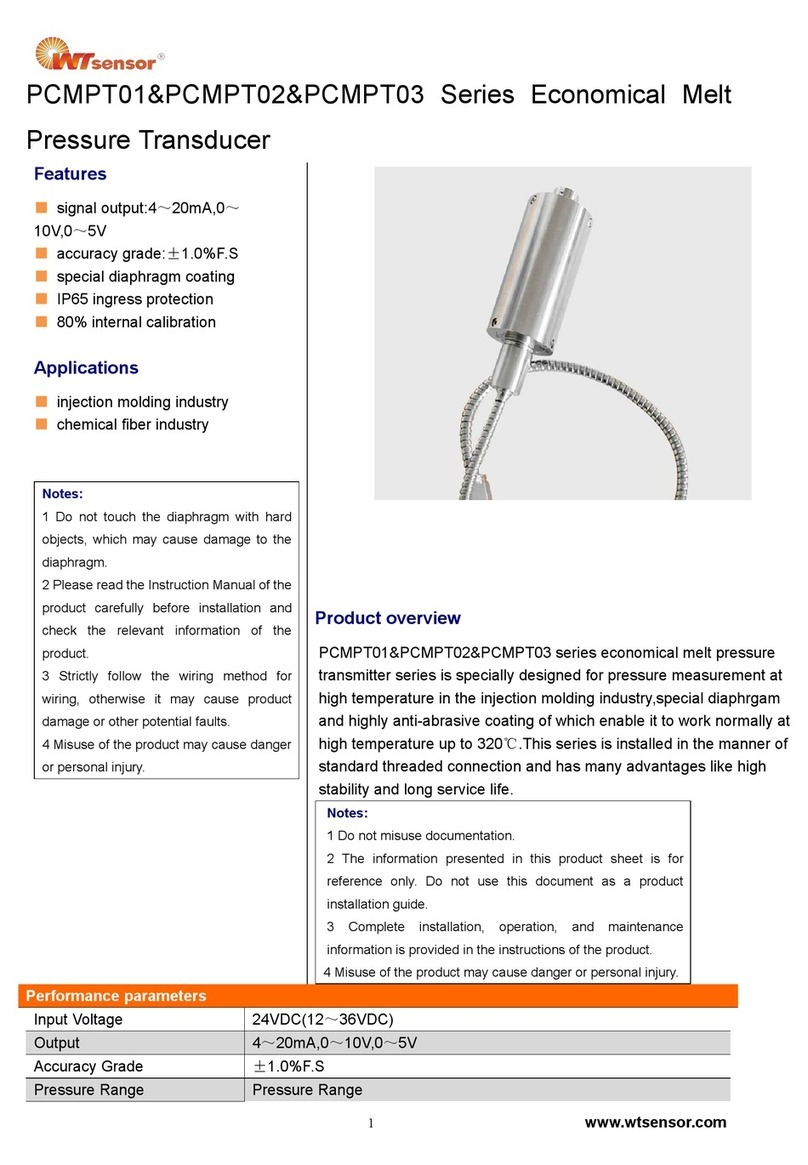
WT sensor
WT sensor PCMPT01 Series quick start guide
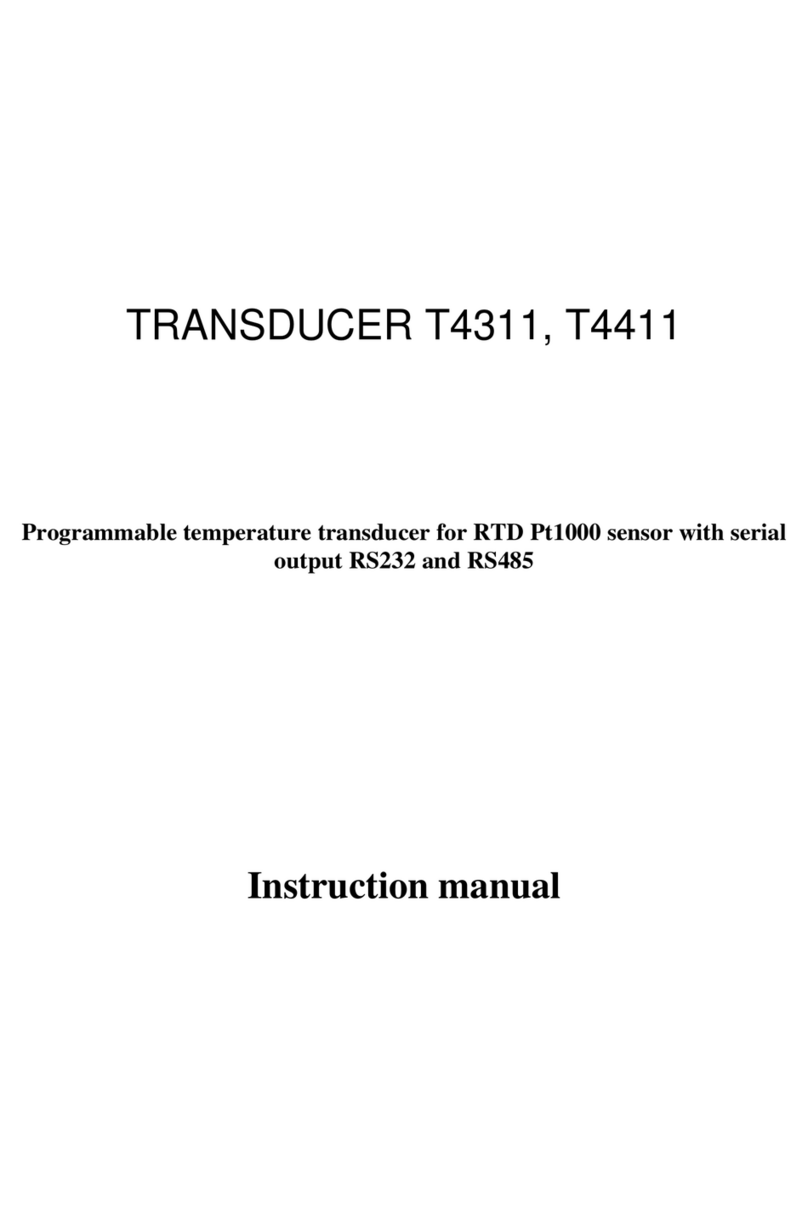
Comet
Comet T4311 instruction manual

S+S Regeltechnik
S+S Regeltechnik PREMASGARD 116 Series Operating Instructions, Mounting & Installation
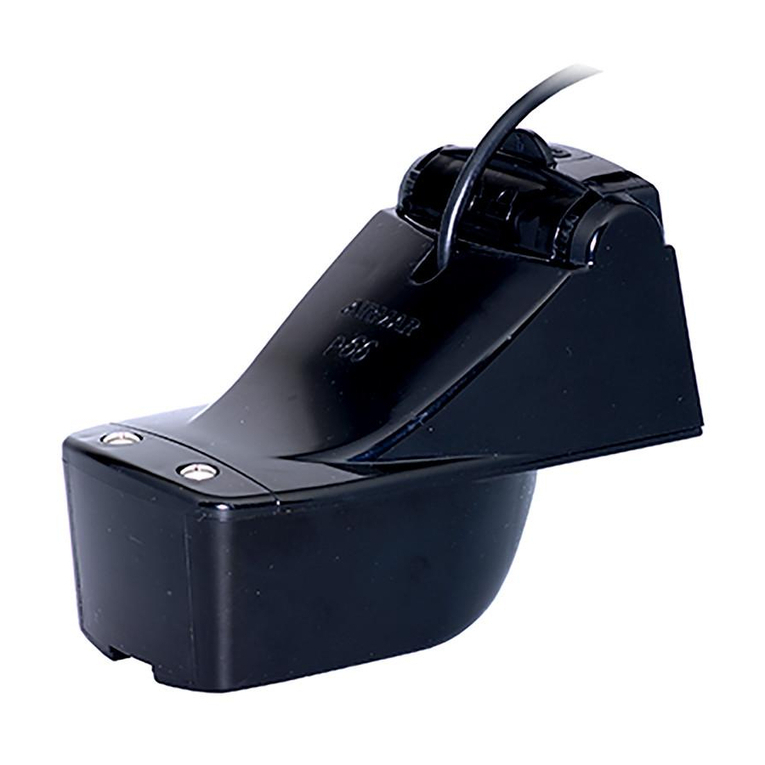
Airmar
Airmar P66 Owners and installation manual
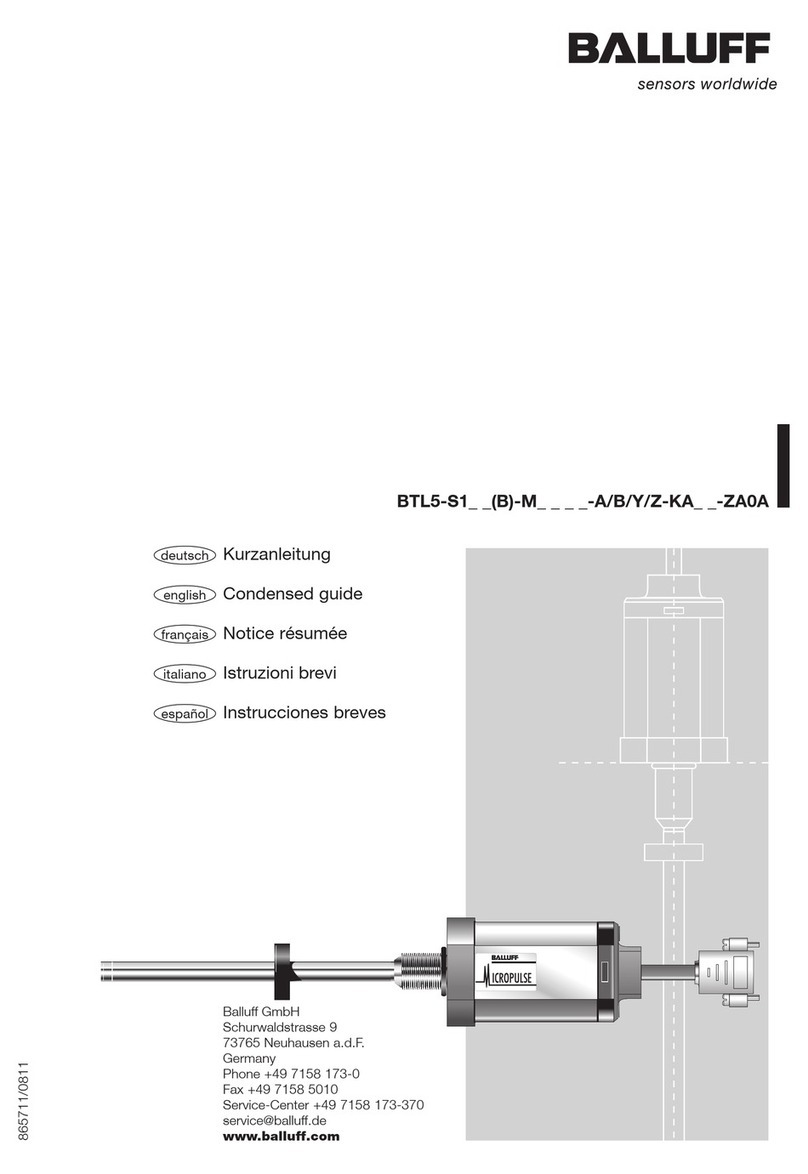
Balluff
Balluff BTL5-S1 Series Condensed guide
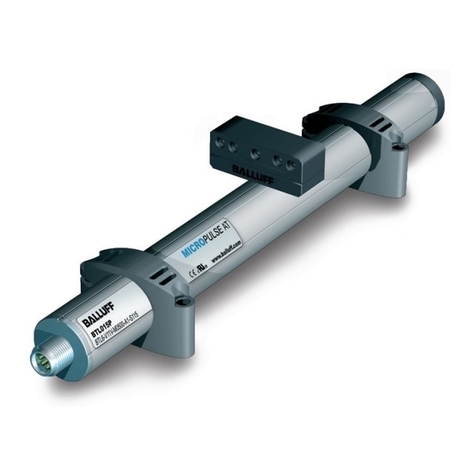
Balluff
Balluff BTL6-V11V-M Series manual
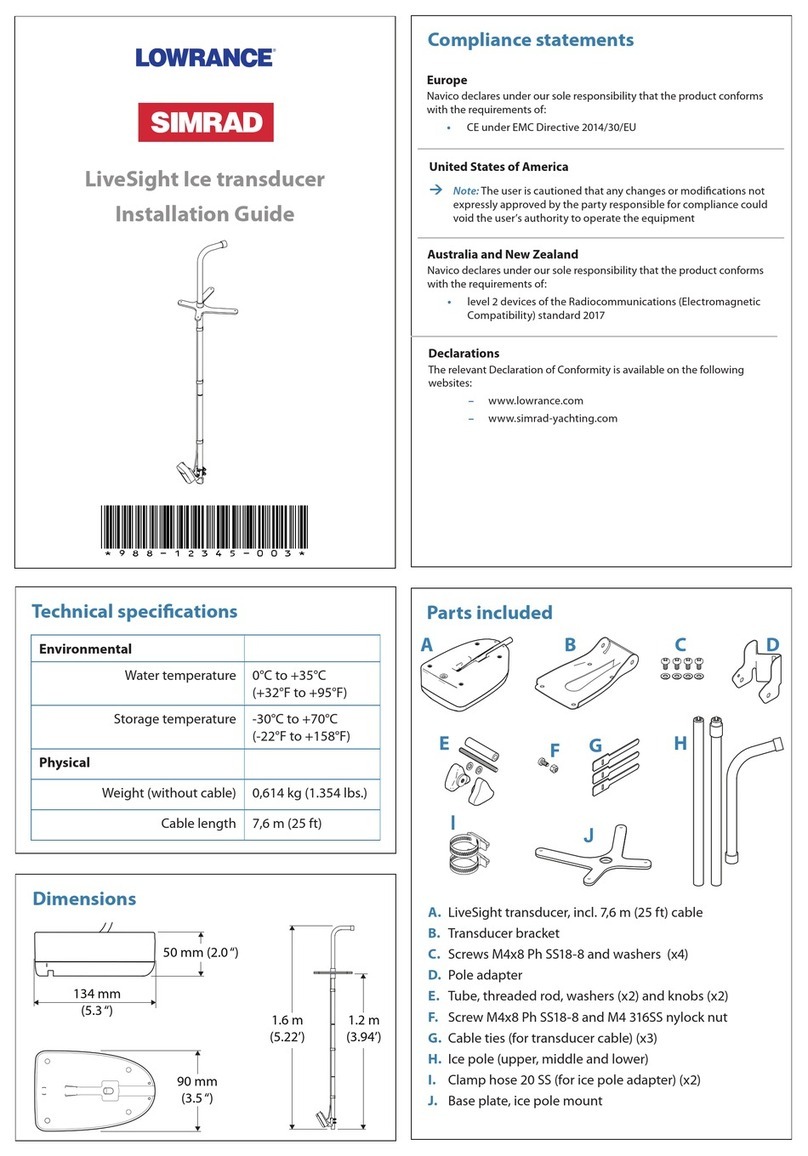
Lowrance
Lowrance SIMRAD Ice transducer installation guide

